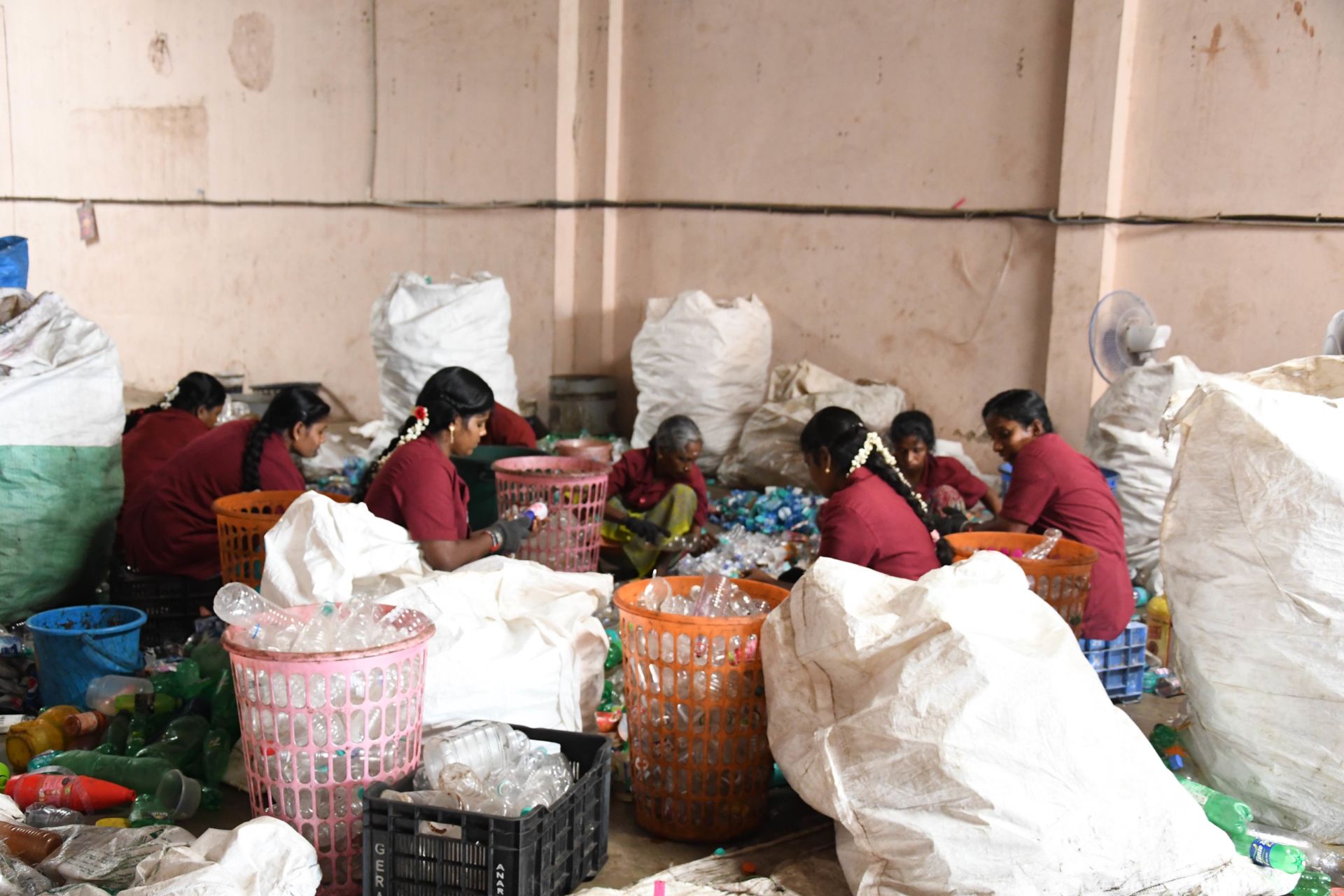The Answer in EU’s Exposome Programme: Refining Risk Assessment with a novel approach to studying the role of the environment in human disease
How dangerous are the pollutants that surround us in our daily lives? We are used to breathing polluted air, especially in towns, across the globe. For example, the Austrialian government’s NSW Health Service has a detailed page warning about air pollutants and air toxics we breathe, including particulate matter, carbon monoxide (from car exhausts), benzene, formaldehyde, toluene and a host of other chemicals.
On the other side of the world, in America, Trump, with his “beautiful coal” policy, has rolled back environmental rules and re-opened coal mining, putting at risk the health of thousands of Americans. The official estimate from the Environmental Protection Agency itself is that the shift could cause as many as 1,630 additional premature deaths annually by 2030 from heart and lung disease – an estimate (according to Bloomberg) that independent experts say may be low.
The World Health Organization estimates that nine out of ten people breathe polluted air from smog hanging over our cities to smoke in our homes, killing seven million people every year. 90% of the world’s children breathe toxic air. Tragically, many of them die: WHO estimates that 600,000 children died in 2016 from acute lower respiratory infections caused by polluted air. Or looking at the data another way: One third of deaths from stroke, lung cancer and heart disease are estimated to be due to air pollution.
China may even be in a worse place. According to a recent Hong Kong University research, air pollution may be shaving an estimated 267 billion yuan (US$38 billion) off the Chinese economy each year in the form of early deaths and lost food production. No small amount: That’s 0.7% of the Chinese GDP. Two pollutants in particular, ground-level ozone (O3) and fine respirable particulate (PM2.5) were found to cause an average 1.1 million premature deaths in the country each year and destroying 20 million tonnes of rice, wheat, maize and soybean.
We tend to dismiss such warnings because they are “estimates”, all couched in conditional terms: We are told there are “possible health effects from their exposure” but we are never told exactly what these effects are in terms of actual damage to our health.
That could soon change thanks to two research projects financed by the European Commission, EXPOsOMICS and HELIX, both part of a single programme of research, the Exposome Programme. With a total budget of €16.3 million, this is the European Commission’s biggest investment in environmental health research to date. Begun in 2012 and ended in 2017, they have helped clarify how changes in the environment directly affect our health and have provided a set of techniques to better assess risk.
Before examining the projects more closely, let’s note that they haven’t arrived a minute too soon. News about expanding levels of pollution have just gotten considerably worse (and scary). Research commissioned by the international WWF and conducted by the Australian University of Newcastle on how much plastic we “eat” has just come up with shocking findings: We “eat” two thousand pieces of microplastics a week, the equivalent of a credit card every seven days. 250 grams of plastic a year.
The revelation of how we ingest so much plastic is even more shocking because the most ubiquitous material in our lives is found – and therefore we send it down – in tap water, salt, seafood and shellfish. And also in a nice mug of beer. In short, one cannot escape.
“These findings must serve as a wake-up call to governments. Not only are plastics polluting our oceans and waterways and killing marine life – it’s in all of us and we can’t escape consuming plastics. Global action is urgent and essential to tackling this crisis,” said Marco Lambertini, WWF International Director General. “If we don’t want plastic in our bodies, we need to stop the millions of tons of plastic that continue leaking into nature every year. In order to tackle the plastic crisis, we need urgent action at government, business and consumer levels, and a global treaty with global targets to address plastic pollution,” continued Lambertini.
This is not going to be easy: The single largest source of plastic ingestion is through water, both bottled and tap, all over the world. There are, of course, large regional variations: Twice as much plastic was found in the water in the US or India compared to Europe or Indonesia. But the findings of the report demonstrate that all people are directly affected everywhere.
We already know that plastic pollution is highly detrimental to the environment. It is a major threat to wildlife, not only through microplastic ingestion but via entanglement and habitat destruction. And it has devastating economic consequences: The UN Environment Programme (UNEP) estimates its annual economic impact on the ocean economy at US$8 billion.
The EU’s Exposome Programme
We still don’t know exactly what the impacts of all those various pollution threats are on human health. This is where the EU’s Exposome Programme, with the two main projects, HELIX and EXPOsOMICS comes in. Deciphering the human exposome is a novel way of addressing the challenge.
Helix, coordinated by Barcelona’s Institute for Global Health, lasted from 2013 to 2017 with a budget of €11.3 million to which the EU contributed € 8.6 million. EXPOsOMICS, coordinated by the UK’s Imperial College, began in 2012 and also ended in 2017, with a budget of €11.6 million to which the EU contributed €8.7 million. Here is a presentation of EXPOsOMICS objectives and activities:
When it comes to the causation of major non-communicable diseases (NCDs), there is persistent uncertainty. To what extent are they attributable to environmental (including life-style and climatic) factors? The Exposome Programme’s innovative approach to assess environmental exposures is to focus on air pollution and water contaminants during critical periods of a person’s life, relying on smart phone technology and ‘omics’ to build a picture of chemical fingerprints.
Researchers used smartphones equipped with GPS and environmental sensors to monitor potential hazards that study participants were exposed to. This information was then combined with blood and urine analysis to investigate whether exposure to risk factors leaves chemical fingerprints that can be detected in bodily fluids. As prof. Vineis of Imperial College and coordinator of the EXPOsOMICS project explained, “the novelty of the project is in the methodology.”
The results helped to improve our understanding on how these pollutants influence the risk of developing chronic diseases. In short, environmental risks are more accurately assessed. Thus, the ultimate objective, as the EXPOsOMICS project document put it, is prevention:
“Effective preventive action will need to be designed, building on knowledge of various risk factors, including exposure to pollutants in daily life, individual behaviour and the social context, taking into account gender issues.”
For now, we are still waiting for “effective preventive action”.
The Gap Between Science and Politics: The Exposome Programme Findings Ignored
Last week, we were given the spectacle of our political leaders at the Council of Europe bickering over the measures that need to be taken to combat climate change. All decisions postponed because of Poland’s determined opposition. Unsurprisingly, Poland was joined by Hungary, Estonia and the Czech Republic.
Why is Poland acting this way, going against all scientific evidence, stopping the decisions that need to be taken at the expense of all Europeans’ health? At the expense of humanity’s very survival? Because Polish politicians, “Poland-First” Trumpian-style populists, are wedded to coal. They know who’s financing them and don’t care a fig about public health.
Political decision-making based on scientific findings is not for populist-nationalists, as Trump has demonstrated in the US, turning the gap between science and politics into a Grand Canyon.
That’s why the Exposome Programme findings are largely ignored – as are so many other scientific findings regarding climate change and the environment. There’s an obvious need to fill the gap. To make the findings intelligible to politicians, to turn them into actionable measures that even a child can understand.
So far this has not been done and what we end up is this: The findings of a €16 million research in environmental risks to public health are not used. No “effective preventive action” has been yet designed, and probably never will. A total waste of money, of European taxpayers’ money. All because the findings are couched in a technical language that is too complex for our political leaders to understand.
What is needed is more effort into making scientific findings more intelligible to politicians. And political leaders, for their part, need to “wake up” and adopt better environmental policies, informed by research. Political decision-makers need to start taking “evidence-based decisions” seriously – not merely bandy about that phrase as a nice slogan without applying it. Our future depends on clean air and clean water.
Note: The section of the article reporting on the Australian research on microplastics is translated from an Impakter Italia article by Eduardo Lubrano published on 19 June 2019.
Featured Image: Plastic bags. From Impakter Italia










